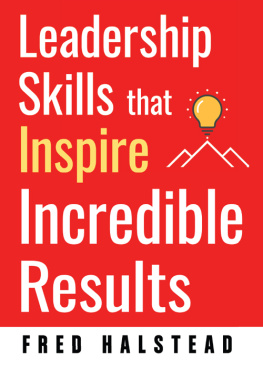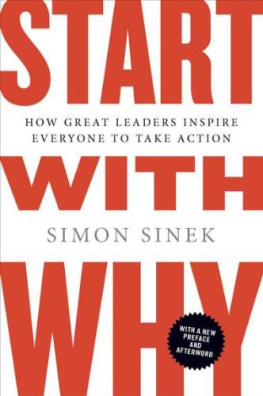Copyright Page
Start with Why Summary
By Michael Hawthorne
Copyright 2010 MichaelHawthorne
Smashwords edition.
This ebook is licensed for your personal enjoyment only. Thisebook may not be re-sold or given away to other people. If youwould like to share this book with another person, please purchasean additional copy for each reader. If youre reading this book anddid not purchase it, or it was not purchased for your use only,then please return to Smashwords, Inc and purchase your own copy.Thank you for respecting the hard work of this author.
Start With Why Summary
Introduction.
Any person or organization can explain what they do; some canexplain how they are different or better, but very few can clearlyarticulate why. WHY is not about money or profit those are results. WHY is the thing thatinspires us and inspires those around us.
This Summary is about a naturally occurring pattern, a way ofthinking, acting and communicating that gives some leaders theability to inspire those around them. Although these natural-born leaders may have come into the world with a predisposition toinspire, the ability is not reserved for them exclusively. We canall learn this pattern. With a little discipline, any leader ororganization can inspire others both inside and outside theirorganization to help advance their ideas and their visions. We canall learn to lead.
Start With Why shows that theleaders who inspire all think, act and communicate
in the exact same way and its the complete opposite of whateveryone else does. Drawing on a wide range of real-life stories,it provides a framework upon which organizations can be built,movements can be led, and people can be inspired and it all startswith WHY .
Assume You Know
We make decisions based on what we think we know. It wasnt too longago that the majority of people believed the world was flat. Thisperceived truth impacted behavior. During this period, there wasvery little exploration. People feared that if they traveled toofar, they might fall off the edge of the earth. So for the mostpart, they stayed put. It wasnt until that minor detail wasrevealed the world is round that behaviors changed on a massivescale.
Now considerhow organizations are formed and how decisions are made. Do wereally know why some organizations succeed and why others dont, ordo we just assume?
As we allknow, however, not all decisions work out to be the right ones,regardless of the amount of data we collect. Sometimes the impactof those wrong decisions is minor, and sometimes it can becatastrophic. Whatever the result, we make decisions based on a
perception ofthe world that may not, in fact, be completely accurate.
When faced with a result that doesnt go according to plan, aseries of perfectly effective short-term tactics are used until thedesired outcome is achieved. But how structurally sound are thosesolutions? There is a wonderful story of a group of American carexecutives who went to Japan to see a Japanese assembly line. Atthe end of the line, the doors were put on hinges, the same as inAmerica. But something was missing. In the United States, a lineworker would take a rubber mallet and tap the edges of the door toensure that it fit perfectly. In Japan, that job didnt seem toexist. Their Japanese guide looked at them and smiled sheepishly. We make sure it fits when we designit .
Everyinstruction we give, every course of action we set, every result wedesire starts with the same thing: a decision. There are those whodecide to manipulate the door to fit to achieve the desired result,and there are those who start from somewhere very different.Though
both coursesof action may yield similar short-term results, it is what we cantsee that makes long-term success more predictable for only one.
Carrots and Sticks
Theres barelya product or service on the market today that customers cant buyfrom someone else for about the same price, about the same quality,about the same level of service and about the same features.
But if you askmost businesses why their customers are their customers, most willtell you its because of superior quality, features, price orservice. In other words, most companies have no clue why theircustomers are their customers. This is a fascinating realization.If companies
dont know whytheir customers are their customers, odds are good that they dontknow why their employees are their employees either.
The realityis, most businesses today are making decisions based on a set ofincomplete or, worse, completely flawed assumptions about whatsdriving their business. There are only two ways to influence humanbehavior: you can manipulate it, or you can inspire it.
From businessto politics, manipulations run rampant in all forms of sales andmarketing. Typical manipulations include dropping the price;running a promotion; using fear, peer pressure or aspirationalmessages; and promising innovation to influence behavior todrive
purchases,votes or support.
When companiesor organizations do not have a clear sense of why their customersare their customers, they tend to rely on a disproportionate numberof manipulations to get what they need. And for good reason.Manipulations work. Reality is, in todays world, manipulations arethe norm. But there is an alternative
The Golden Circle
There are afew leaders who choose to inspire rather than manipulate in orderto motivate people. Whether individuals or organizations, everysingle one of these inspiring leaders thinks, acts and communicatesexactly the same way. And its the complete opposite of the
rest of us.Consciously or not, how they do it is by following a naturallyconcurring pattern that I call the Golden Circle.
The Golden Circle is an alternative perspective to existingassumptions about why some leaders and organizations have achievedsuch a disproportionate degree of influence. It offers clearinsight as to how Apple is able to innovate in so many diverseindustries and never lose its ability to do so. It explains whypeople tattoo Harley-Davidson logos on their bodies. It provides aclearer understanding not just of how Southwest Airlines createdthe most profitable airline in history but why the things it didworked. It all starts with Why.
Before we canexplore its applications, let me first define the terms, startingfrom the outside of the circle and moving inward.
WHAT : Every single company andorganization on the planet knows WHAT they do. This is true no matterhow big or small, no matter what industry. Everyone is easily ableto describe the products or services a company sells or the jobfunction they have within that system.
WHAT s areeasy to identify.
HOW : Some companies and peopleknow HOW theydo WHAT they do.Whether you call them a differentiating value proposition,proprietary process or unique selling proposition, HOWs are often given toexplain how something is different or better. Not as
obvious as WHATs , many think these are the differentiating or motivatingfactors in a decision. It would be false to assume thats all thatis required. There is one missing detail:
WHY: Very few people or companiescan clearly articulate WHY they do WHAT they do. When I say WHY , I dont mean to make moneythats a result. By WHY I mean what is your purpose,cause orbelief? WHY doesyour company exist? WHY do you get out of bed every morning? And WHY should anyone care?When most organizations or people think, act or communicate, theydo so from the outside in, from WHAT to WHY .
But not theinspired companies. I use Apple Inc. frequently as an examplesimply because they have broad recognition and their products areeasy to grasp and compare to others. Whats more, Apples successover time is not typical. Their ability to remain one of the mostinnovative companies year after year combined with their uncannyability to attract a cultlike
Next page
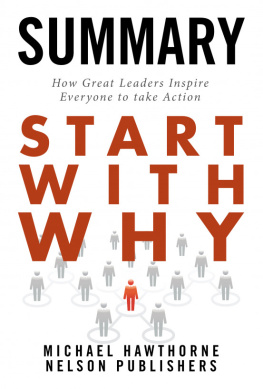
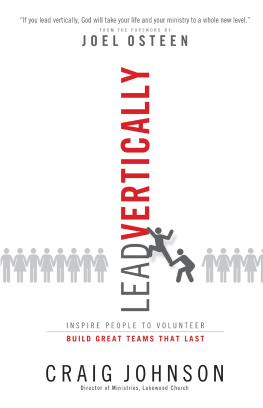
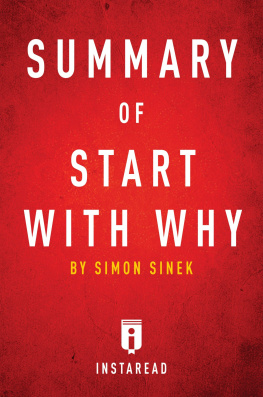
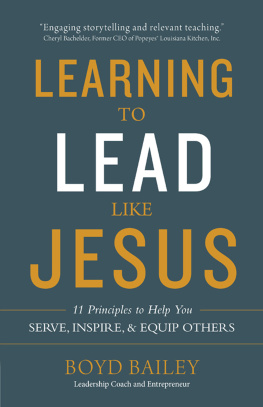
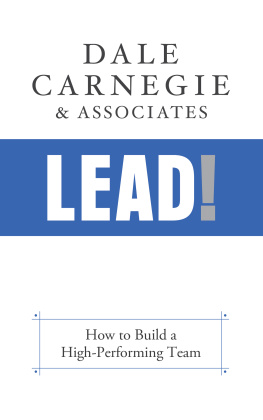


![Maxwell - The 360 [-degree] leader: developing your influence from anywhere in the organization](/uploads/posts/book/218782/thumbs/maxwell-the-360-degree-leader-developing-your.jpg)
